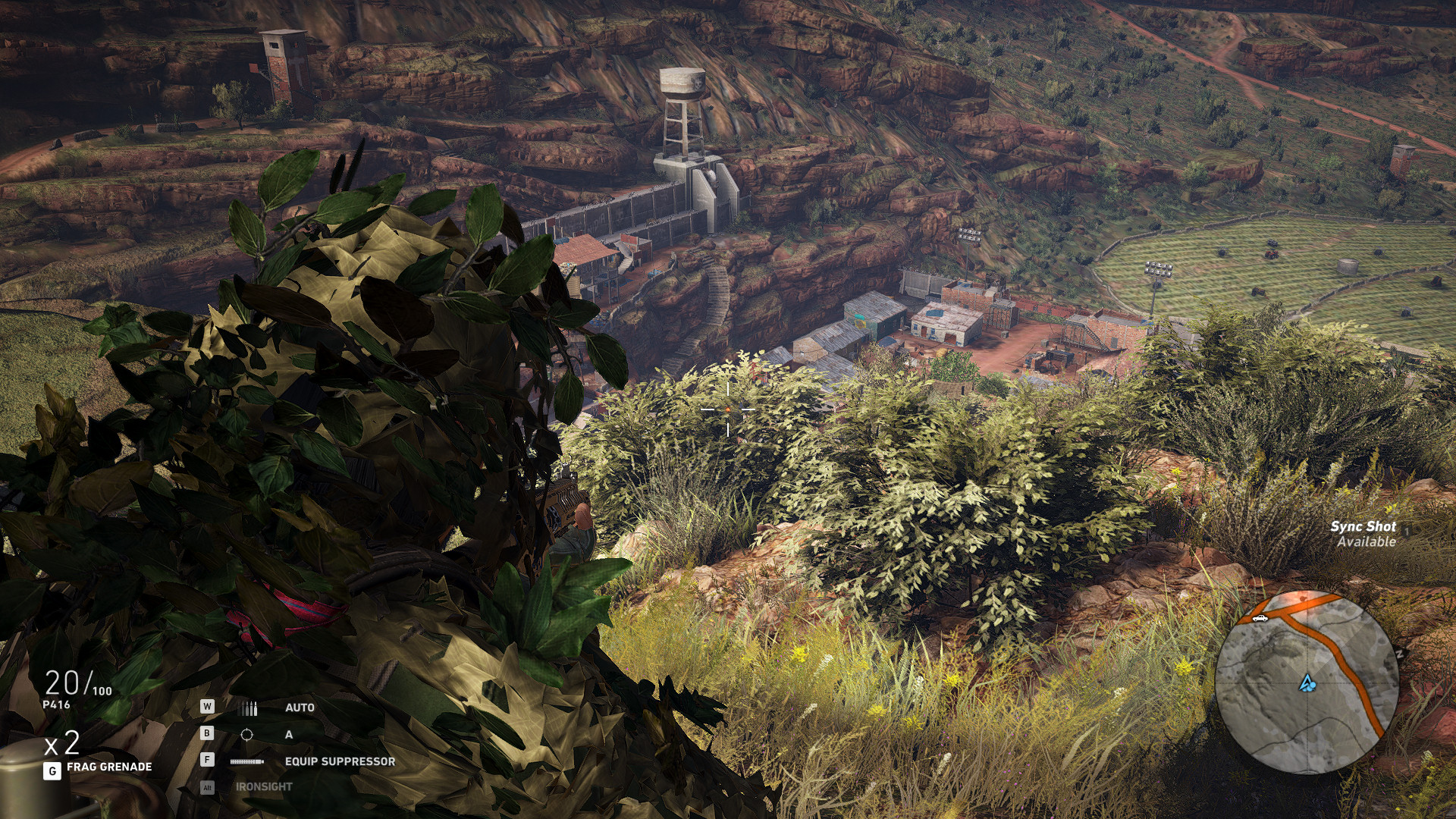Tom Clancy's Ghost Recon Wildlands Performance Review
Benchmarks: FPS, Frame Time, and Smoothness
Benchmark Sequence
Tom's Clancy Ghost Recon Wildlands includes an integrated benchmark that lasts about 55 seconds. It's composed of one sequence, which alternates between close and far views. While we're using this metric for our test, certain parts of the game itself do prove more graphically demanding, we've found.
Medium Quality - 1080p
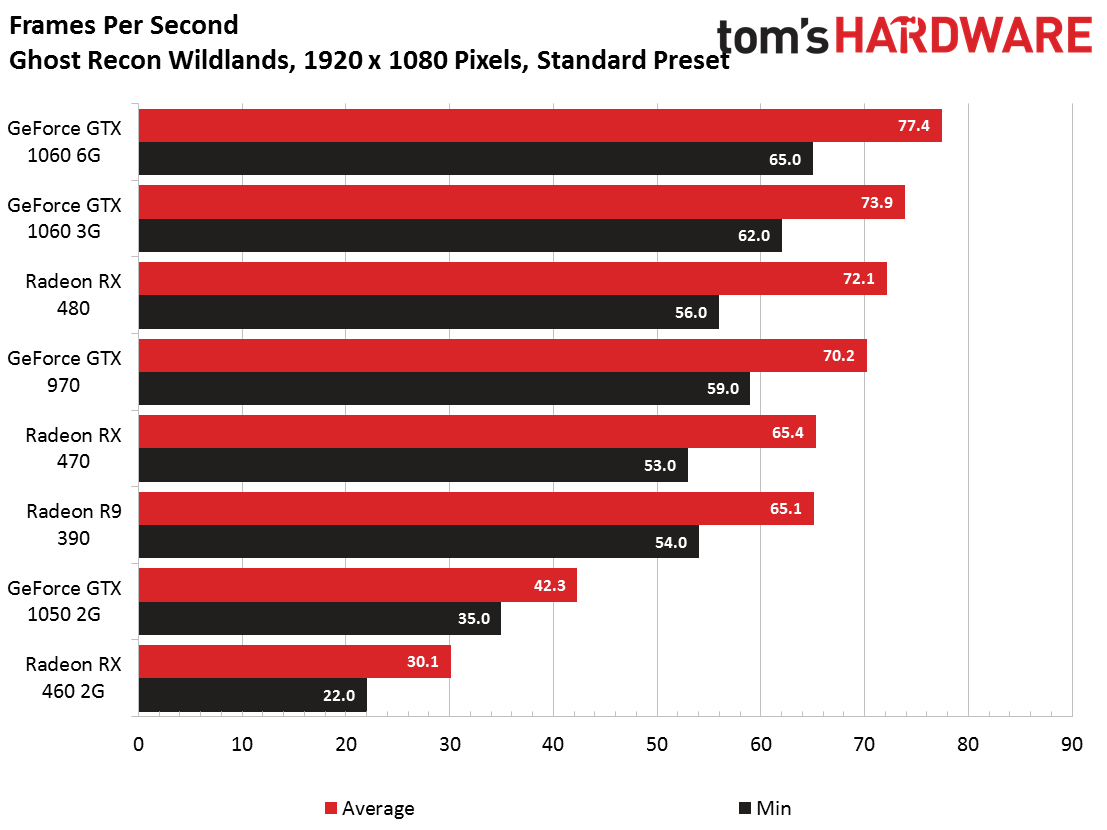
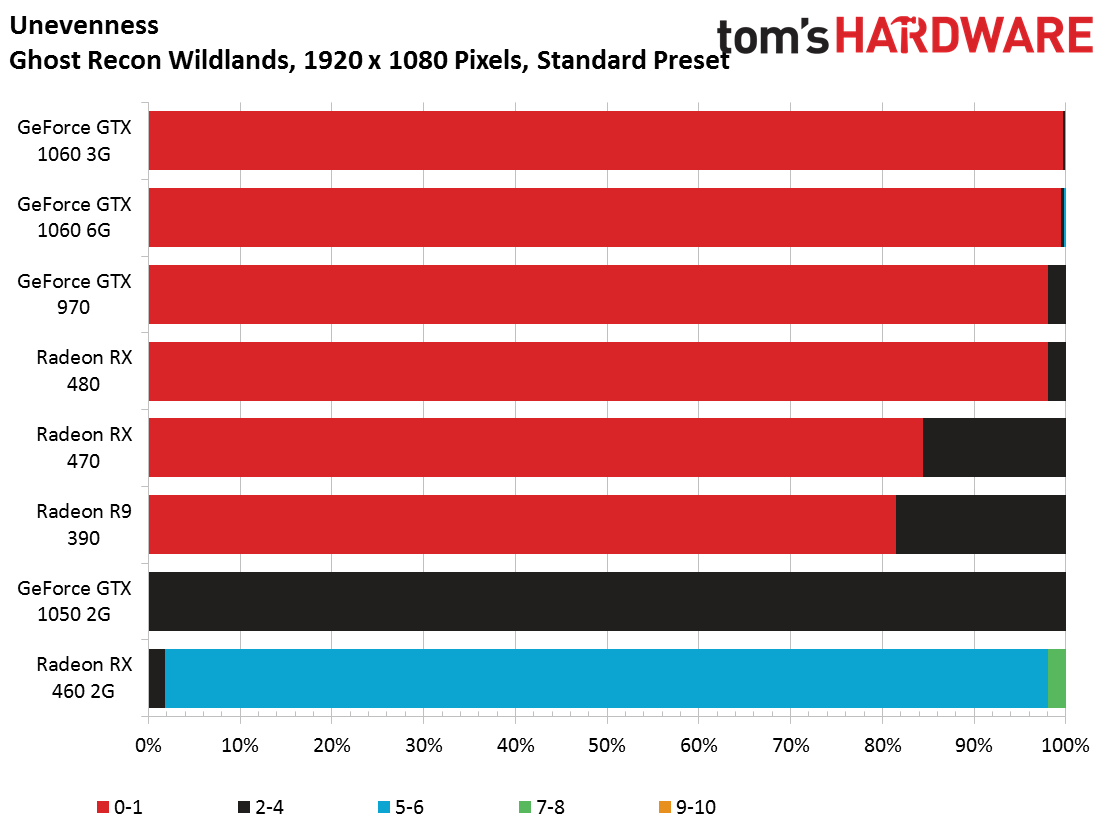
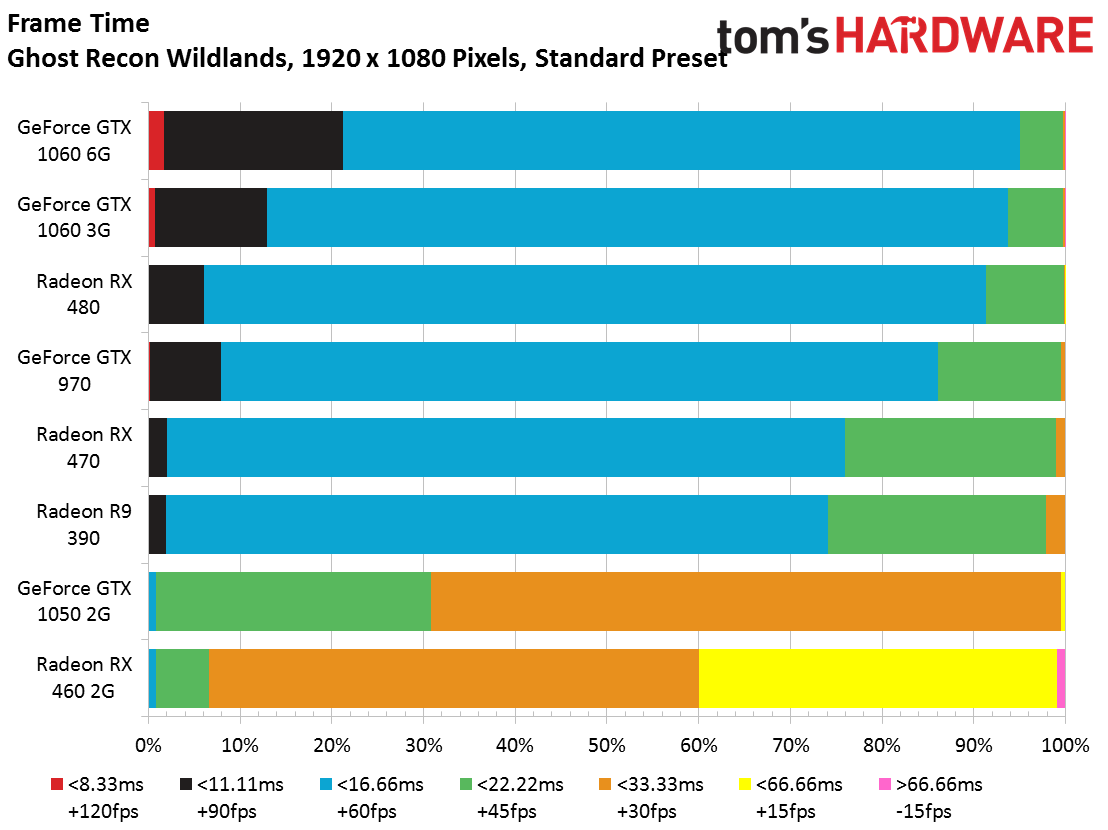
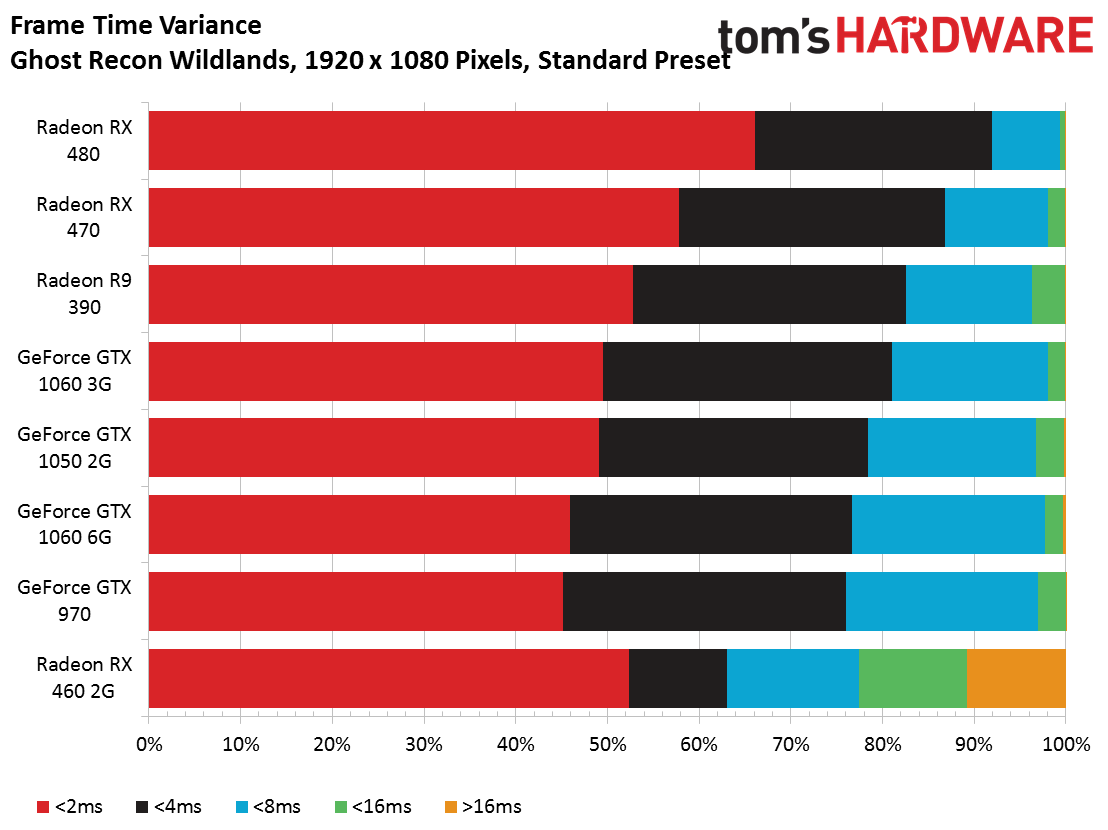
At Medium quality, the GeForce GTX 1060 cards dominate with frame rates that never drop below 60 FPS. The Radeon RX 480 and GeForce GTX 970 aren't far behind, while the RX 470 and R9 390 are a notch below. They all deliver respectable performance, though.
The GeForce GTX 1050 and Radeon RX 460 can't say the same; they've already fallen behind. In fact, our benchmark sequence is uncomfortably choppy on the Radeon.
Medium Quality - 1080p - Patch 1.1.5
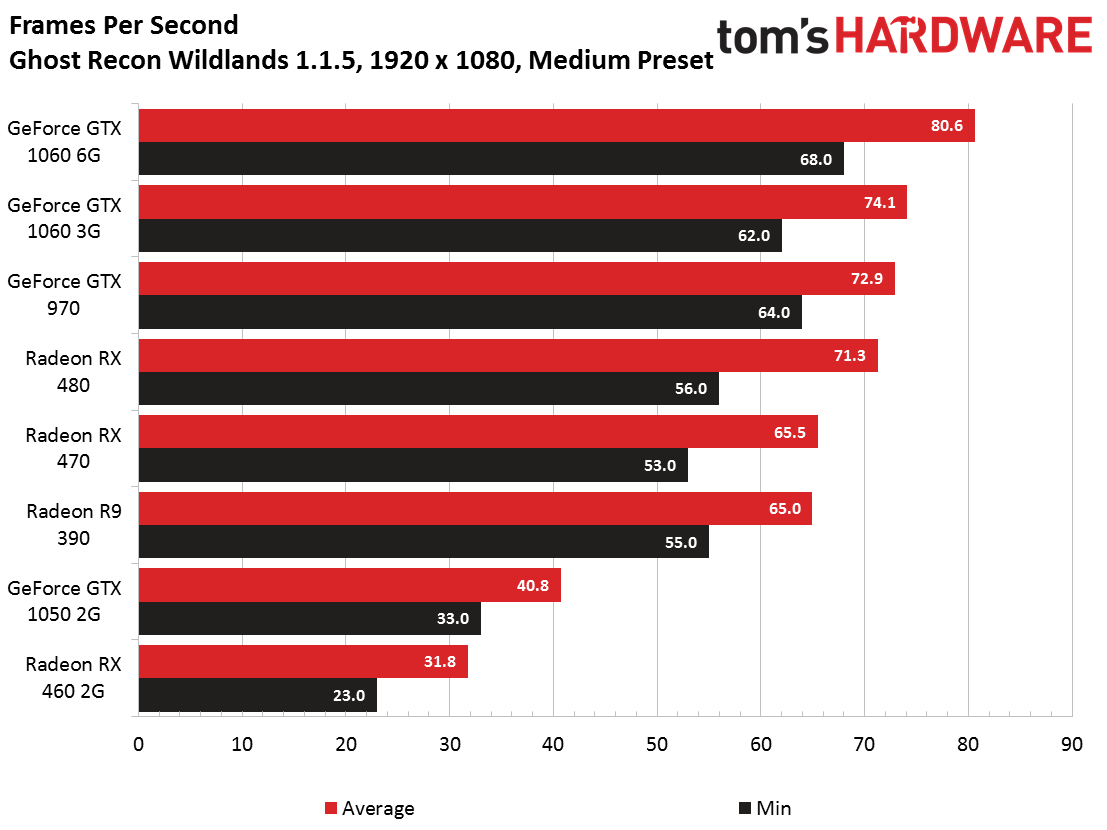
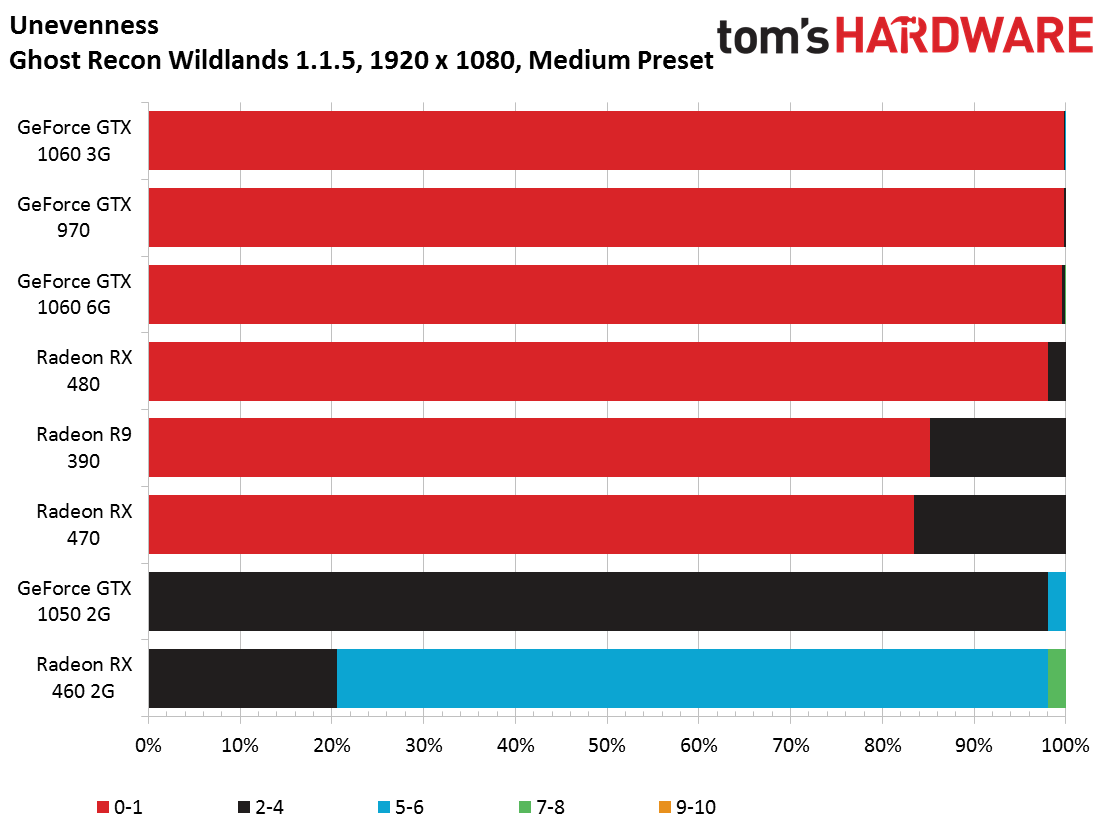
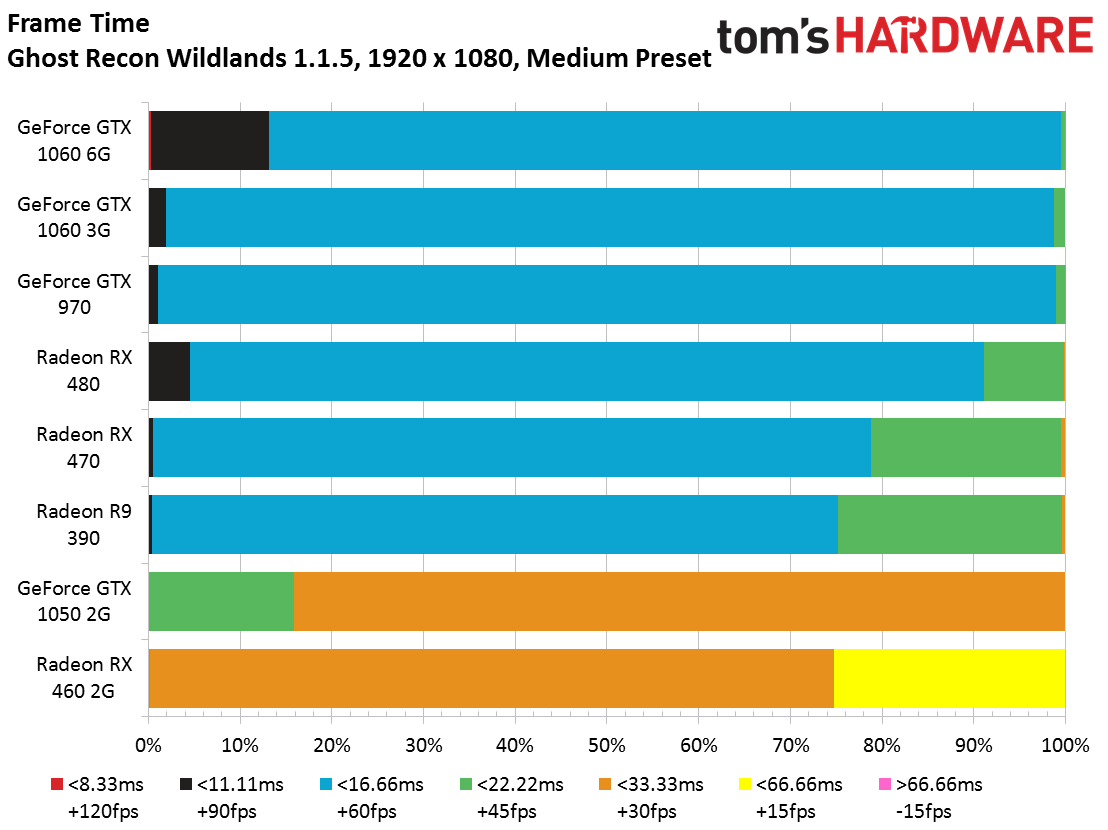
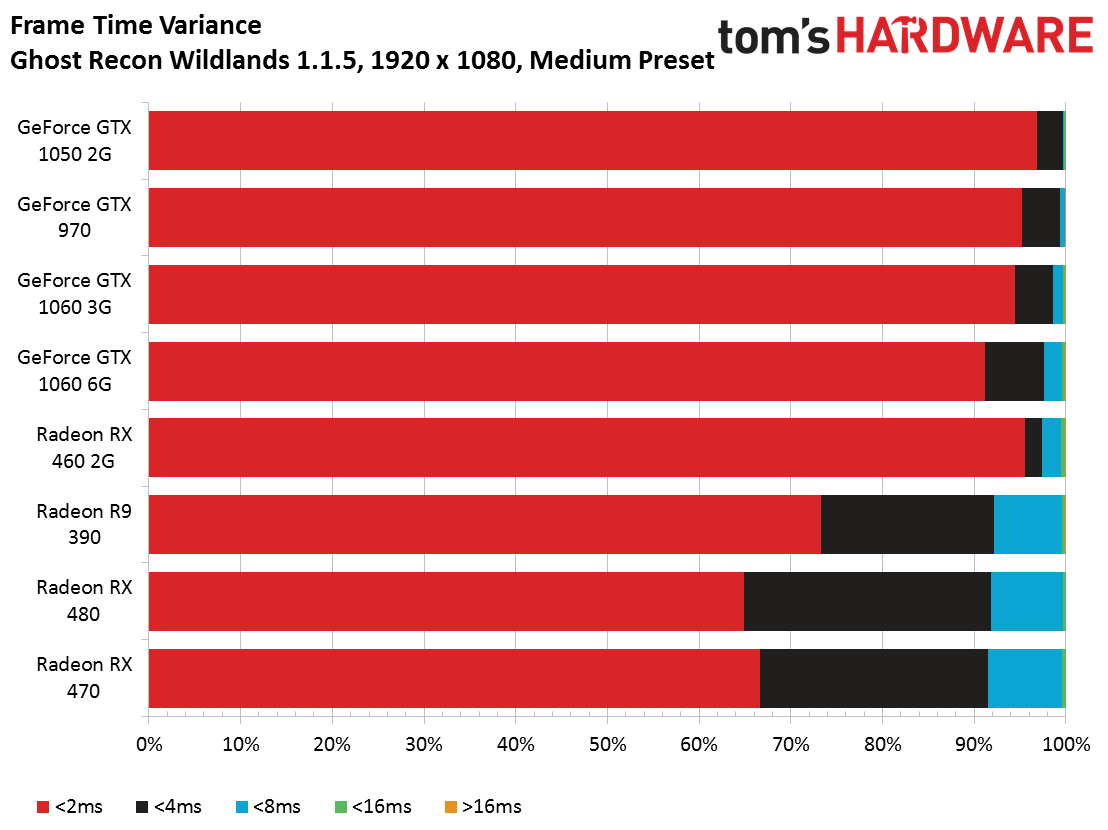
Only the GeForce GTX 1060 6GB, GTX 970, and GTX 1050 (to a smaller extent) demonstrate slightly better performance with patch 1.1.5. On the other hand, all of the cards enjoy improved frame time stability, particularly the 2GB RX 460), which has a noticeably positive effect on perceived smoothness.
Very High Quality - 1080p
Given their struggles at Medium quality, we don't bother with the GeForce GTX 1050 or Radeon RX 460 using the Very High preset. We do, however, add the GeForce GTX 1060 6GB and Radeon RX 480 with some additional Nvidia-contributed effects.
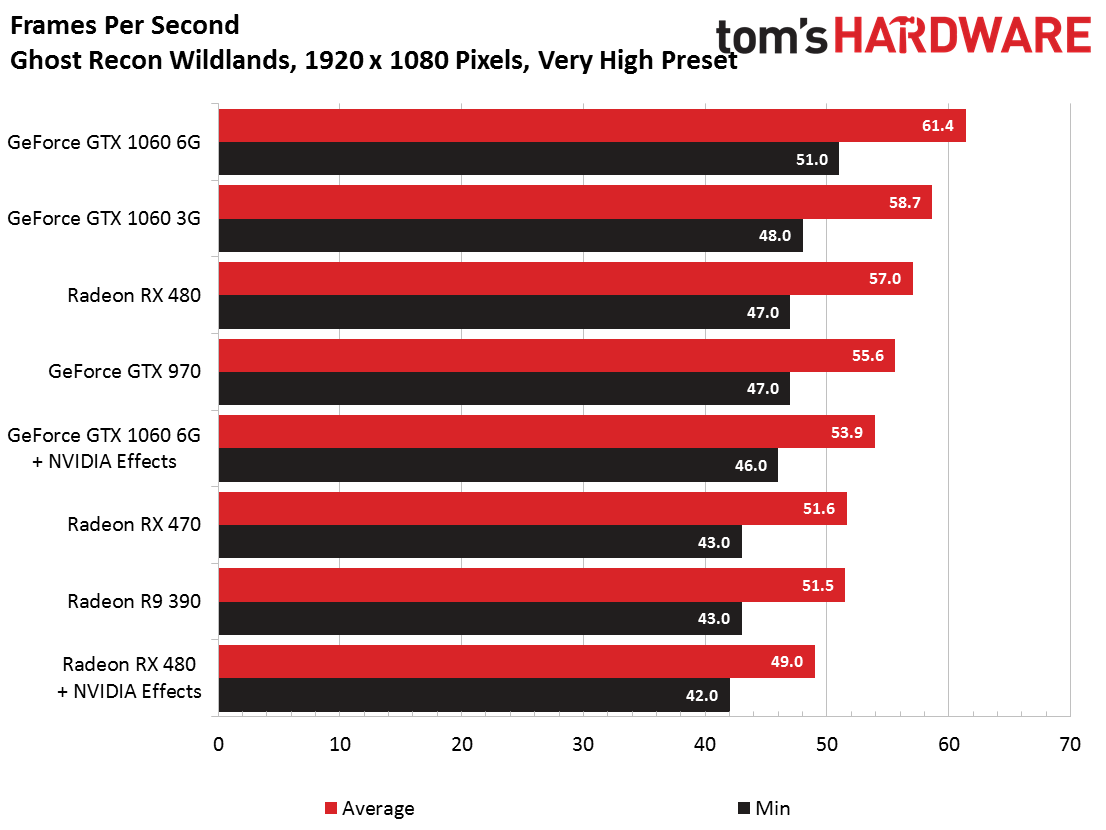
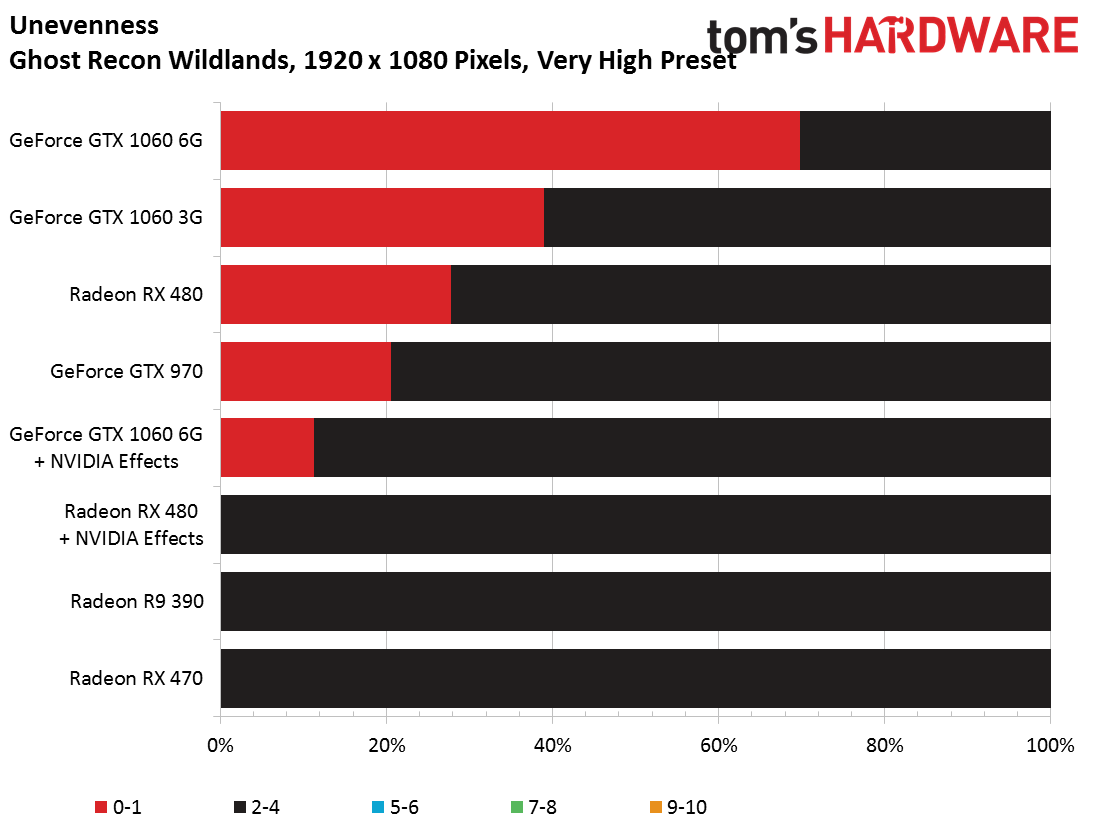
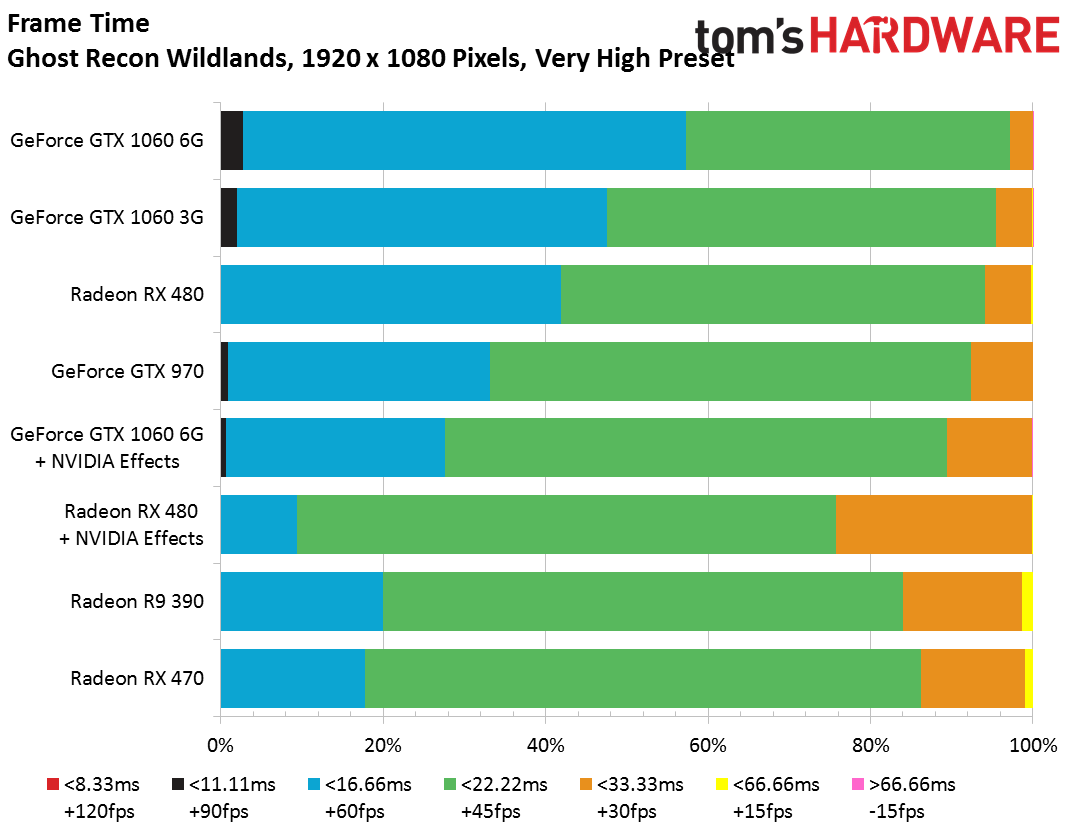
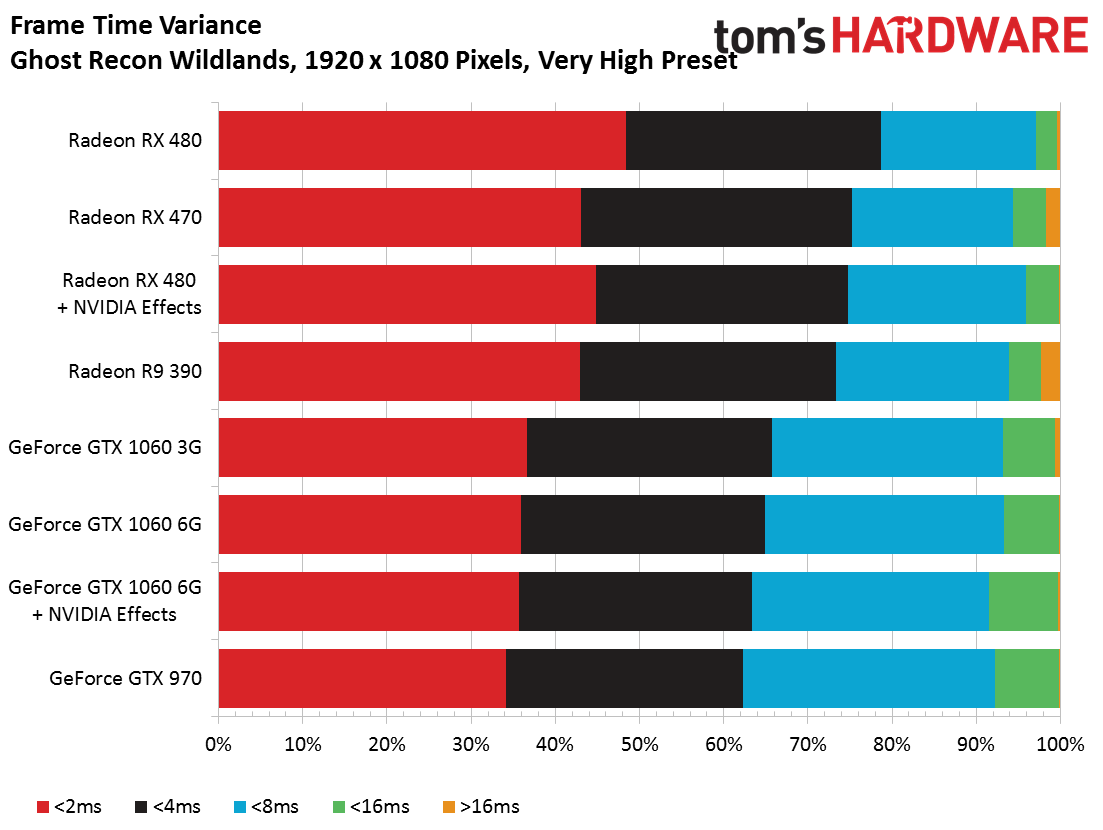
Even the slowest contender keeps its minimum frame rate above 40 FPS, but only Nvidia's GeForce GTX 1060 6GB makes it through the benchmark without ever dropping below 50 FPS. The sequence still runs relatively smoothly across our test field, though.
It's no surprise that activating HBAO+, Turf Effects, and Enhanced God Rays has a measurable performance impact. The drop is fairly equivalent, affecting the GeForce by -12% and the Radeon by -14%.
Get Tom's Hardware's best news and in-depth reviews, straight to your inbox.
Very High Quality - 1080p - Patch 1.1.5
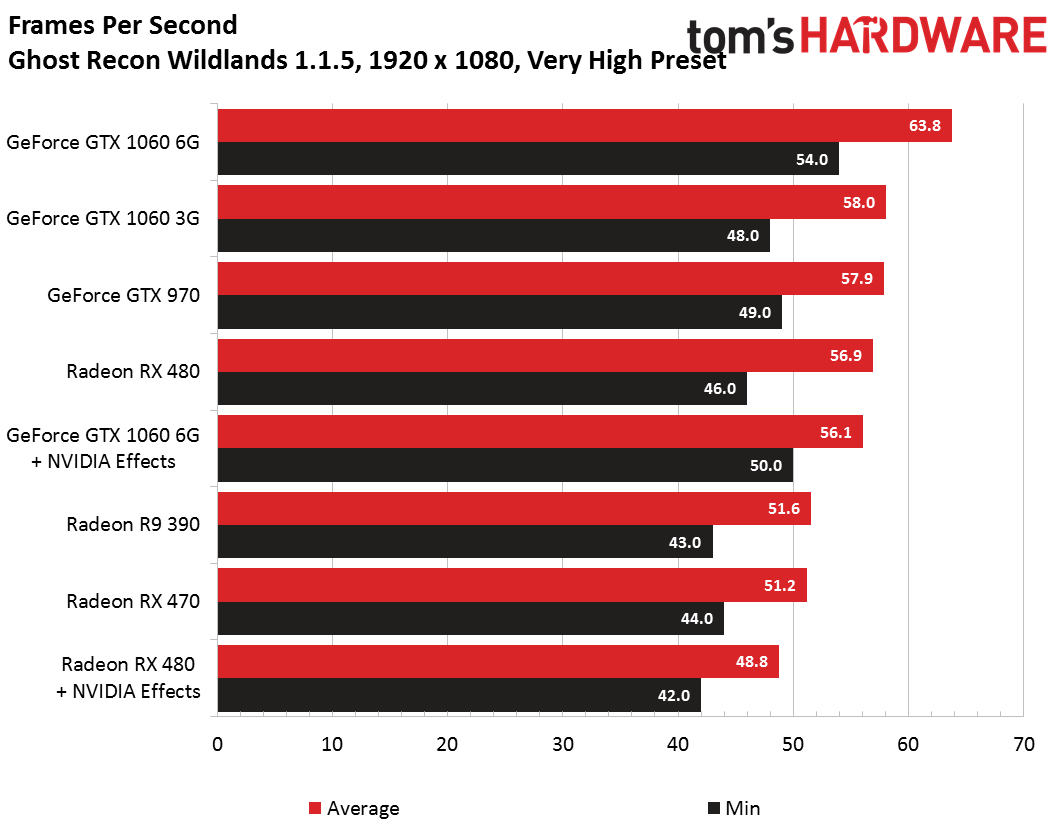
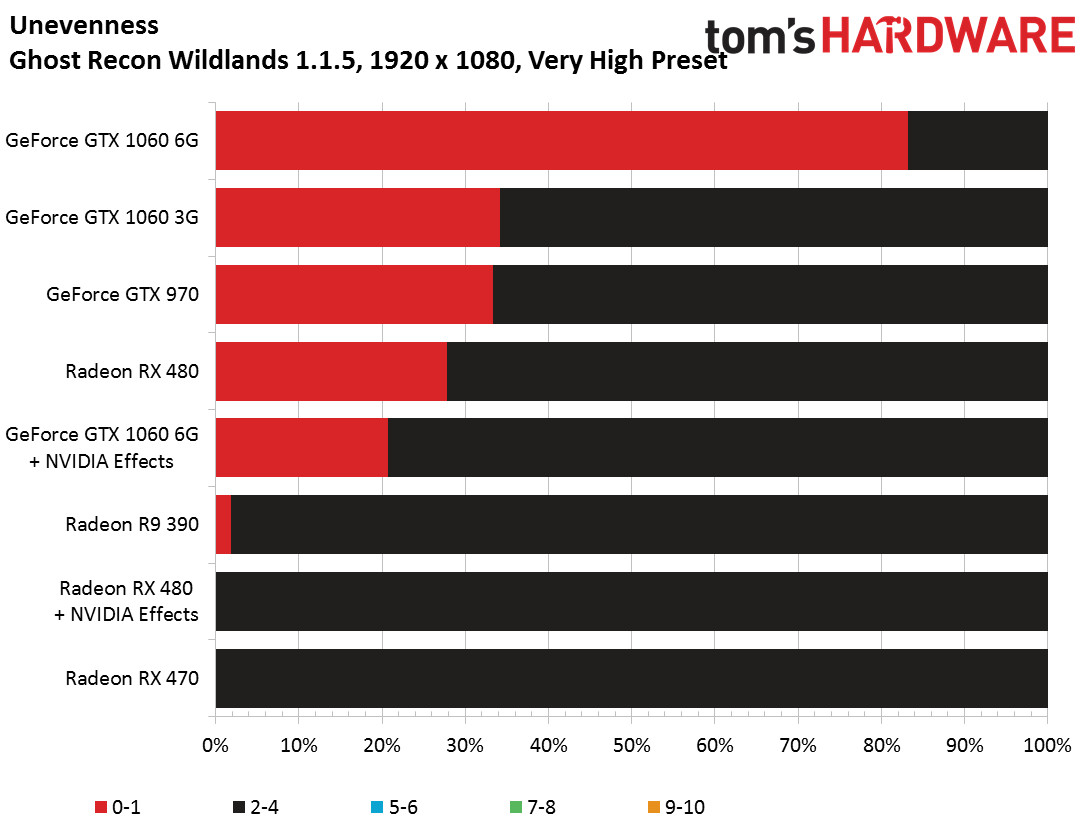
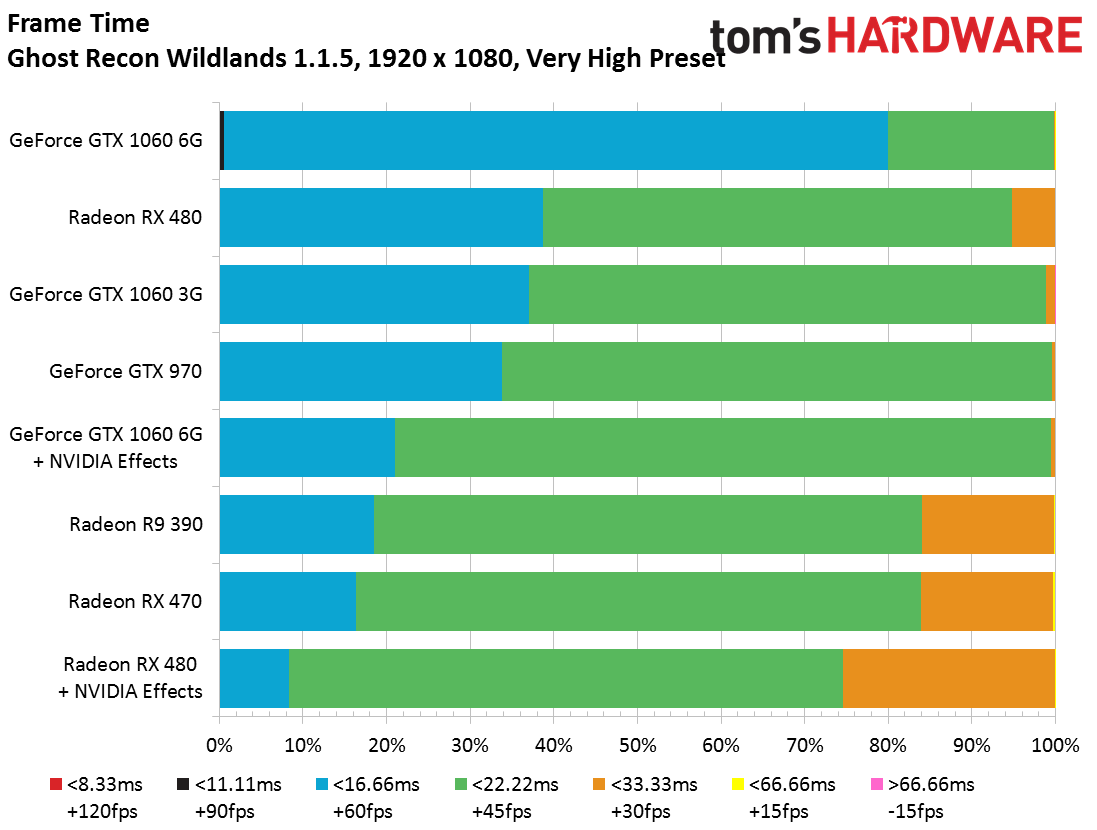
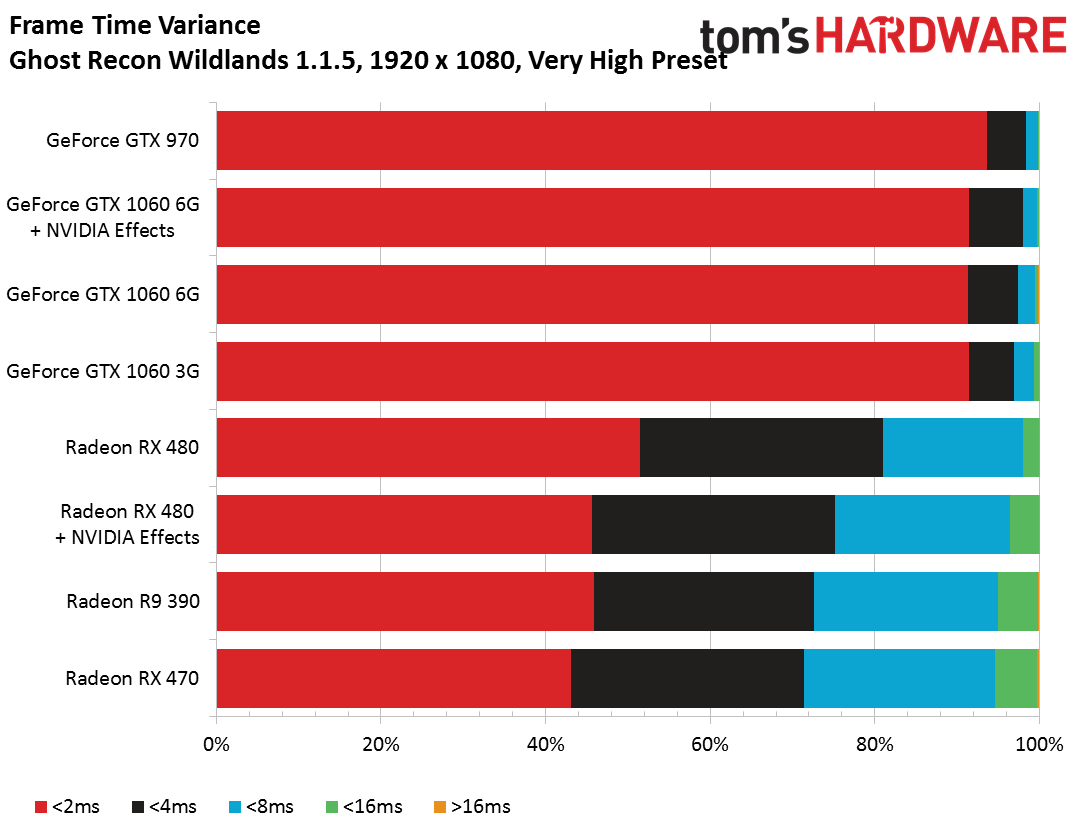
Once again, the GTX 1060 6GB and GTX 970 see their frame rates improve slightly. We also notice that only the GeForce cards seem to benefit from improved frame time stability. That's interesting, since this patch was supposed to help Radeons perform better.
Current page: Benchmarks: FPS, Frame Time, and Smoothness
Prev Page How We Test Ghost Recon Wildlands Next Page CPU & RAM Resources, and Conclusion-
dorsai Decent review...I really appreciate the use of "common" components vs uber high end CPU's and GPU's that 2-3% of the population has. The bar charts for CPU usage are difficult to digest...maybe a simple % used graph would be better. Also a look at CPU scaling would be helpful...clock speed in particular but also core count scaling.Reply -
Bob_8_ I played the Beta - We got in a jeep, drove off a cliff, crashed then got outa the jeep and started running to where we needed to go.Reply -
bak0n I have to agree. I enjoyed seeing the use of an I5 since I'm still using my 3570k @ 4.2Ghz. In fact I have the GTX 1060 to go with it so this becomes even more relevant of a review to me. It's also very close in performance I can expect from my 3 alienware laptops. with GTX 1060's.Reply -
Kridian "We got in a jeep, drove off a cliff, crashed then got outa the jeep and started running to where we needed to go."Reply
lol That's... not good. No penalty for being reckless. -
hardcore8uk I'm not going to mention anything about the review, nothing!Reply
What I am going to talk about is why every time I come on this website my Sony Z1 Compact mobile phone suddenly gets extremely hot and terribly slow and drains battery rapid , this does not happen on any other website I visit, do you really need to display so many adverts all over the page, what else can it be!.
I will stop coming on your mobile phone killing website, my phone never gets this warm even when playing demanding games.
Goodbye - www.tomsMobileDrainingHardware.com -
loki1944 I notice hard drops on some of my systems during gameplay, never have this issue in any other game, only this one. On both i7 and i5, AMD and Nvidia systems.Reply -
dfg555 Good thing CPU Usage was included. Most review sites should do this, it goes to show how quad cores are starting to die out. That i5-6500 has still some little bit of headroom left though. You could probably stick a 980 Ti in it and have some minor bottlenecking at 1080p. Would be more interesting to see how the i7-6700/7700 does. Those should have plenty of headroom left, unless it's 4K then we can with pretty much any CPU that has decent IPC.Reply -
harper691 This game requires a very good graphics card to play if you want the game to look somewhat decent. I have a GTX 760 TI and i can only run it on low. Since it is open world, there is so much stuff for the gpu to load and render, it eats alot.Reply -
NCONSiDERATE https://www.youtube.com/watch?v=8pIw_QW3_dcReply
THERES A VIDEO WORTH WATCHING ABOUT GHOST RECON: WILDLANDS HAHA.

